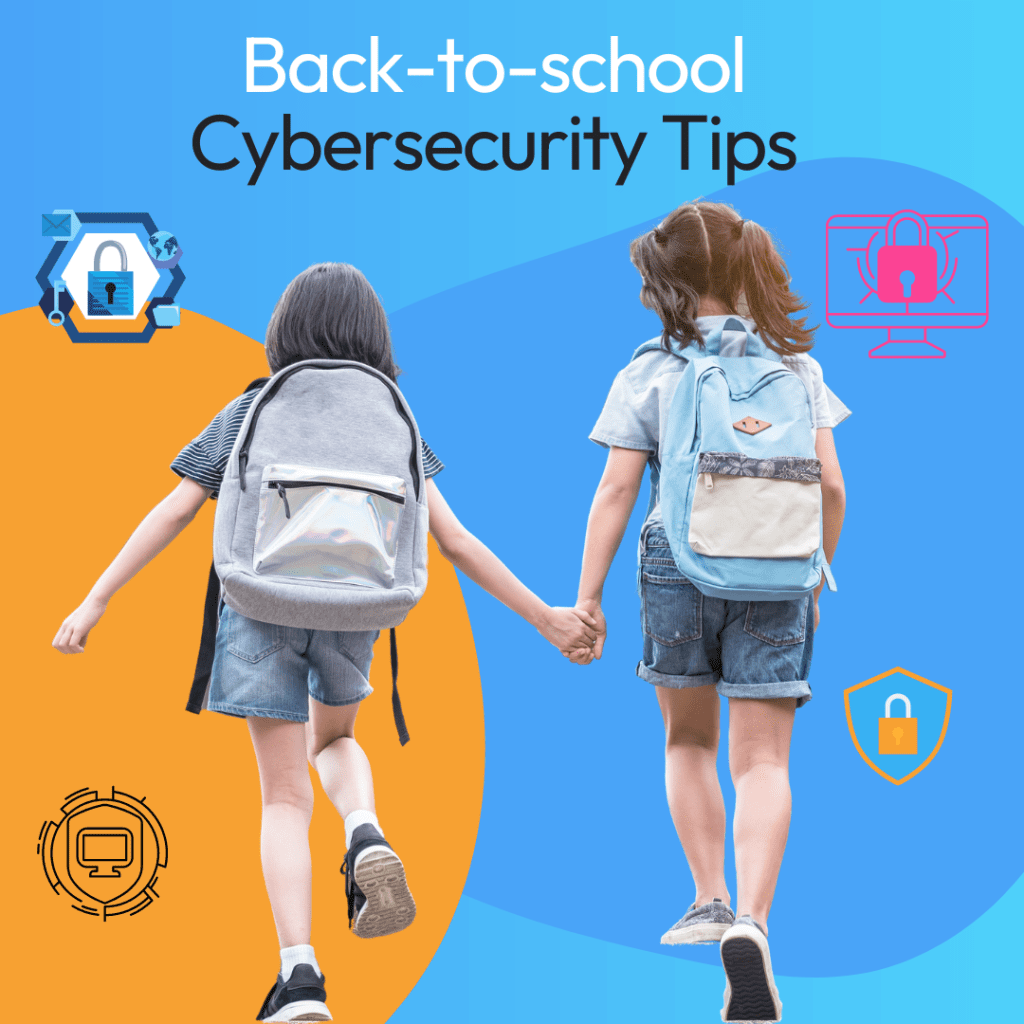As the back-to-school season approaches, it’s not just about stocking up on school supplies and organizing schedules. It’s also crucial to address your child’s online safety, especially if they’re avid gamers. The virtual world can be both exciting and treacherous, and it’s essential for parents to be proactive in ensuring their children’s cybersecurity. In this blog post, we’ll delve into some valuable back-to-school cybersecurity tips tailored for parents and kids, helping you foster a secure online gaming environment.

Back-to-School Cybersecurity Tips
- Open Communication: The Foundation of Online Safety
Before delving into technical aspects, remember that open communication is the cornerstone of online safety. Talk to your child about the importance of being cautious online, explaining the potential risks and how to respond to them. Encourage them to come to you if they ever encounter something uncomfortable or suspicious while gaming.
- Choose Strong Passwords
Start the school year by reinforcing the importance of strong passwords. Teach your child to create passwords that are not easily guessable, combining a mix of upper and lower case letters, numbers, and special characters. Emphasize the need for a unique password for each gaming account to prevent a breach in one account from affecting others.
- Enable Two-Factor Authentication (2FA)
Teach your child about the benefits of two-factor authentication (2FA). 2FA adds an extra layer of security by requiring a second form of verification beyond the password. This could be a code sent to a mobile device or an email address. Walk your child through the process of enabling 2FA on their gaming and other accounts to ensure that only authorized individuals can access their accounts. This is strongly recommended to prevent stolen accounts and being hacked.
- Be Cautious with Personal Information
Explain to your child the importance of keeping personal information private while gaming. This includes not sharing their real name, address, school name, phone number, or any other identifying information. Online predators often use personal information to manipulate or harm children, so it’s vital to instill this awareness early on.
- Vet Game Platforms and Communities
Before your child starts playing a new game, take the time to research the platform and its community. Some platforms have more stringent security measures and better content moderation than others. Look for games that have positive reviews regarding safety and a robust reporting system for inappropriate behavior.
- Regularly Update Software and Games
Regularly updating software and games isn’t just about accessing the latest features—it’s also about patching security vulnerabilities. Help your child understand that updating their gaming software promptly is crucial for maintaining a safe online environment.
- Use Parental Control Software
Utilize parental control software to manage and monitor your child’s gaming activities. Many games, apps and software allows you to set time limits, control the types of games they can play, and even monitor their in-game communications. When it comes to monitoring in-game communication for threats and dangers, ProtectMe sends you alerts when you child comes in contact with danger. This level of oversight helps you ensure your child’s safety without stifling their enjoyment.
- Teach Responsible Online Behavior
Educate your child about responsible online behavior. Stress the importance of treating others with kindness and respect, even in the virtual world. Explain that bullying or harassment is unacceptable, and they should report any instances of toxic behavior.
- Recognize Phishing Attempts
Teach your child to recognize phishing attempts, which are common in the gaming world. Warn them about clicking on suspicious links, especially those promising free in-game currency, rare items, or cheats. Hackers often use these tactics to compromise accounts or deliver malware.
- Stay Informed About Trends and Risks
The digital landscape is constantly evolving, and new risks may arise at any time. Stay informed about the latest trends and potential dangers in the online gaming world. Engage in ongoing conversations with your child, so they are equipped to identify and handle emerging risks.
Conclusion
As your child heads back to school and dives into their gaming routine, their cybersecurity should be a top priority. By implementing these back-to-school cybersecurity tips, you’re empowering your child to navigate the online gaming world safely and responsibly. Remember, the key to a secure online environment is a combination of technological measures and open communication, allowing you to support your child’s digital adventures while keeping potential risks at bay.